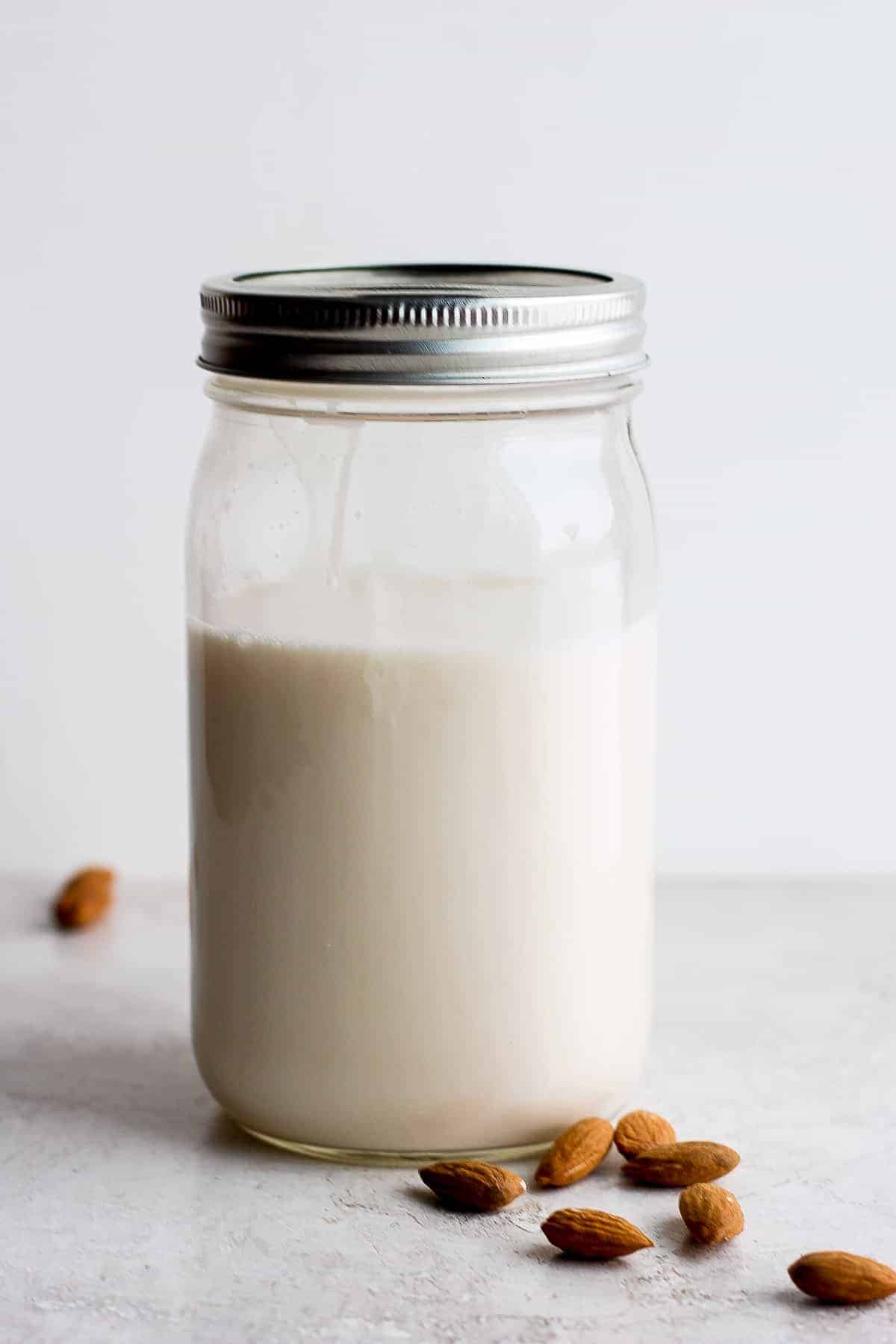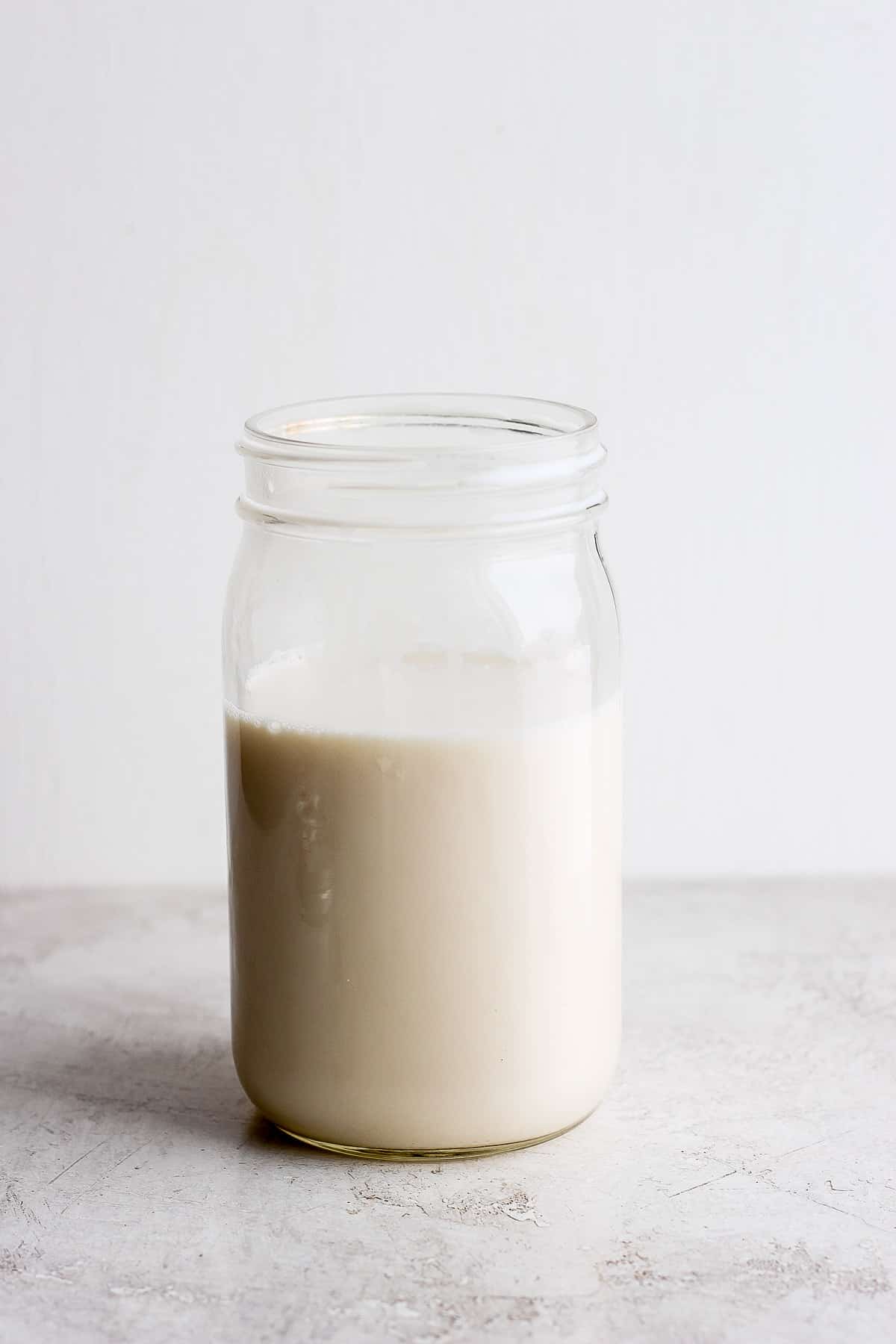Homemade Almond Milk
Updated Jun 21, 2025
Make homemade almond milk with this step-by-step tutorial. Almond milk uses just two ingredients, a blender/food processor, and a strainer.
This post may contain affiliate links. Please read our disclosure policy.

Jump to Section
Homemade Almond Milk is the best!

If I have the time, I’ll always make almond milk at home before grabbing a carton from the store. It’s just so much cleaner, no gums, no weird thickeners, no long list of ingredients I can’t pronounce. Just almonds, water, and a pinch of salt.
It does take a little planning since the almonds need to soak overnight, but the process itself is quick. Plus, the taste and texture are so much better than store-bought. I use it in smoothie recipes, overnight oatmeal, baking, pretty much anywhere I’d use regular milk.
Happy Cooking!
– Yumna
Homemade Almond Milk Ingredients
- Almonds: Use raw, unsalted almonds
- Water: Filtered water is best
- Salt: Any variety is fine.
How to Make Homemade Almond Milk







Almond Milk Recipe
Ingredients
- 1 cups raw almonds
- 4 cups filtered water
- Pinch salt
Instructions
- Combine raw almonds with enough water to cover the almonds by about least 3 inches. Let stand overnight.
- The next day, strain the almonds. Then transfer to a high-speed blender with the 4 cups filtered water and a pinch of salt.
- Blend until smooth and well blended, about 1 minute. Be careful not run too long as this will heat the milk.
- Strain the milk in a nut milk bag, coffee filter, or a clean and thin dish towel. Pour the almond milk into a bottle, seal and place in the fridge for up to 7 days.
Notes
Nutrition
Nutrition information provided is an estimate. It will vary based on cooking method and specific ingredients used.
Recipe Tips
- Add more water during the blending process to thin the almond milk. You can use up to 8 cups.
- Check your towel. If using a kitchen towel to strain, make sure it was not laundered with scented products which might leave a weird taste in the milk. It should be very thin. Cheesecloth will also work.
- Press hard on the ground nuts to get all the milk out of them. You may have to squeeze the towel or nut milk bag to help this process.
- Add dates for sweeter almond milk. I recommend adding it to the overnight soak so the dates soften along with the almonds and then blending with the almonds and fresh water. You can also try adding other sweeteners, such as honey, agave syrup, maple syrup, or a tiny bit of sugar. Start with one teaspoon and add to taste.
- Experiment with more flavors. Try adding 1 teaspoon of vanilla extract of ½ teaspoon of ground cinnamon.
- Use up the pulp. Add to smoothies, or dry it out in the oven and use it in a breadcrumb mix, as a crunchy topping on salads, or to top baked goods like muffins or banana bread. To dry it out, spread on a rimmed baking sheet and bake in a 200˚F oven for about 90 minutes, stirring every 30 minutes or so.
- Use your senses. The milk will keep for 3-5 days. You’ll know if it’s bad! It should look and smell good – not sour. While homemade almond milk may separate and require shaking, it should not be overly thick or at all chunky after shaking. As always, when in doubt, throw it out.
Recipes to Make with Homemade Almond Milk
- Dairy-Free Rice Pudding
- Turmeric Latte
- Vegan French Toast
- Vegan Edible cookie Dough
- Easy Strawberry Smoothie
- Gluten-Free Strawberry Pancakes
- Asparagus Soup
- Protein Oatmeal Recipe
- Vegan Cinnamon Rolls
- Dairy-Free Artichoke Spinach Dip







Comments
I love Feel Good Foodie!
Thank you so much, Sheila!